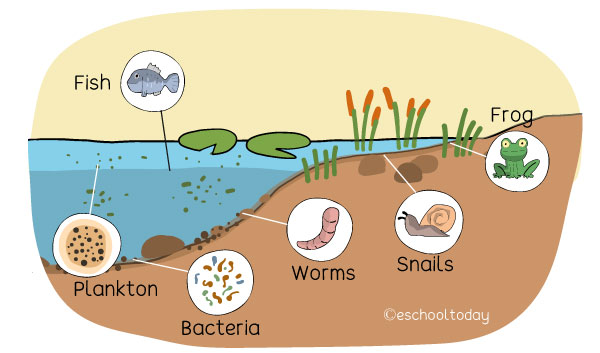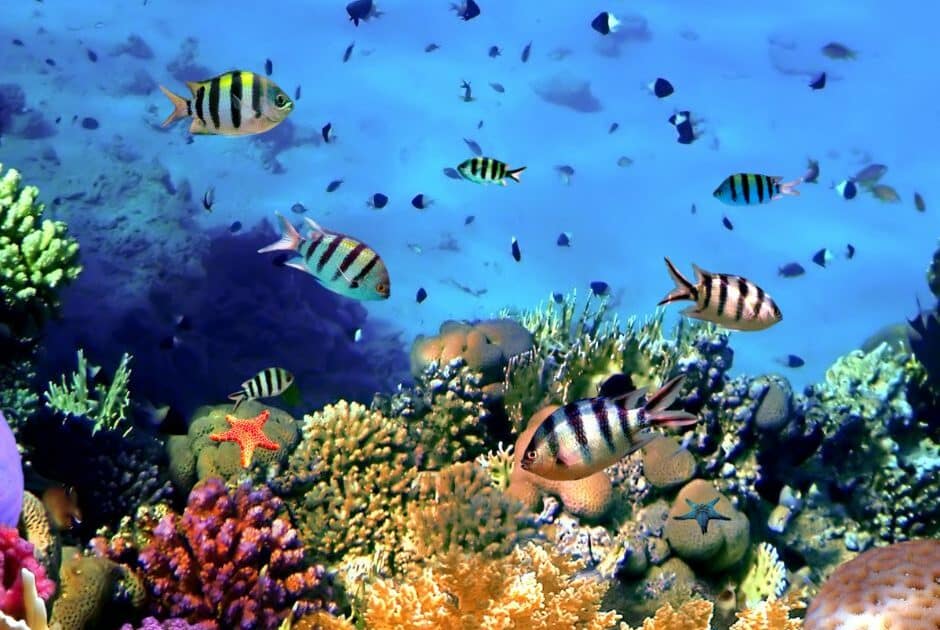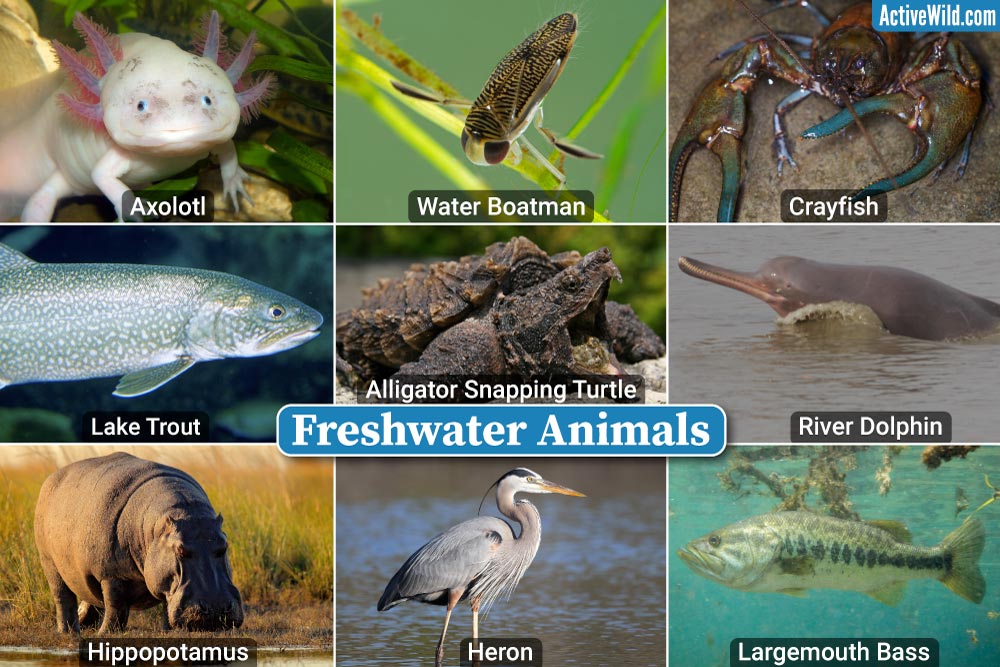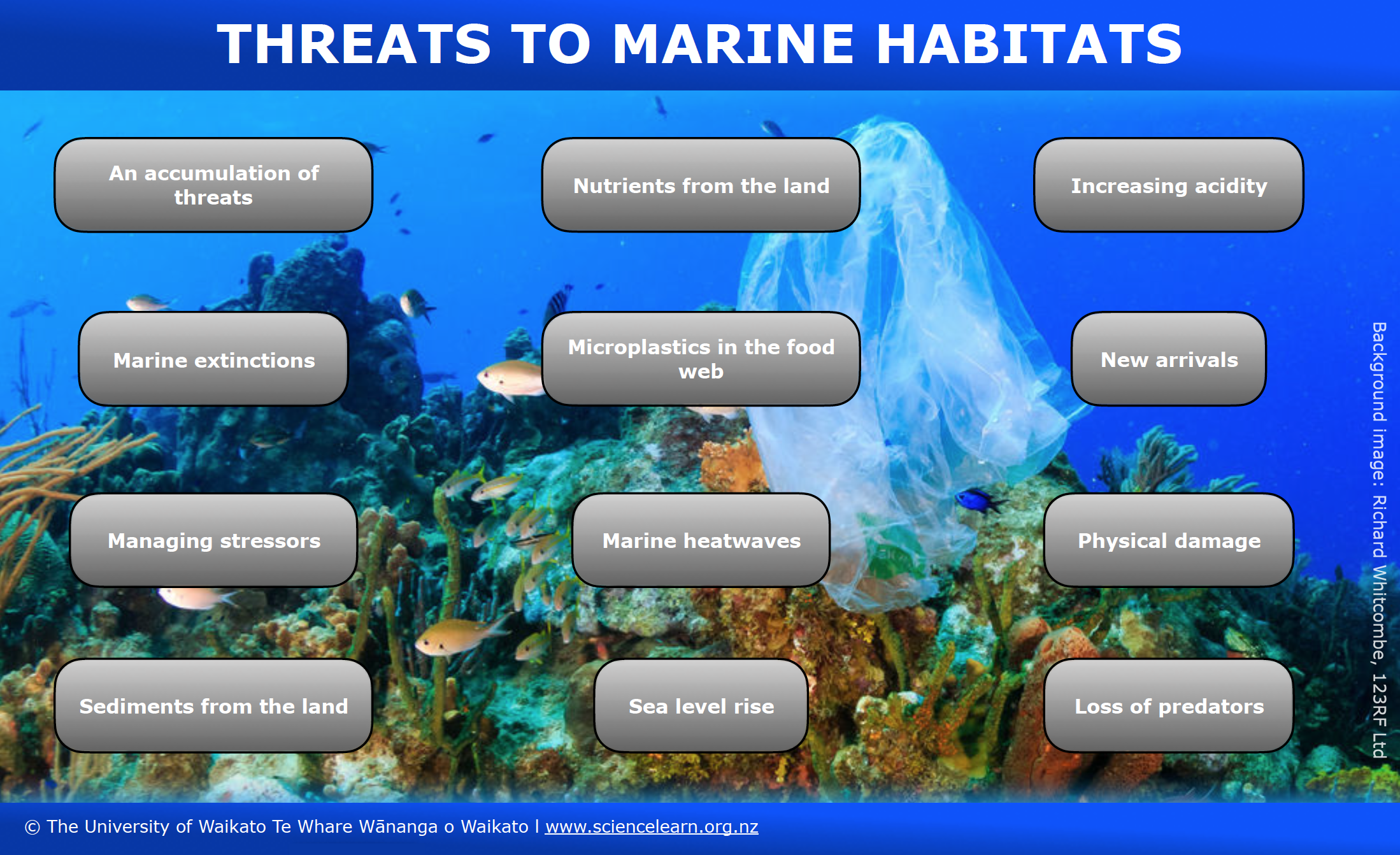Topic what is an aquatic ecosystem: Embark on a journey to explore aquatic ecosystems, where the wonders of water-based environments reveal the intricate balance of life beneath the surface.
Table of Content
- What are the different types of organisms that make up an aquatic ecosystem?
- Definition of Aquatic Ecosystem
- Types of Aquatic Ecosystems
- Importance of Aquatic Ecosystems
- Characteristics of Aquatic Ecosystems
- Threats to Aquatic Ecosystems
- Conservation and Restoration Efforts
- YOUTUBE: The Aquatic Environment: Marine and Freshwater
- Role of Aquatic Ecosystems in Global Ecology
- Human Impacts on Aquatic Ecosystems
- Adaptations of Aquatic Life
- Research and Studies on Aquatic Ecosystems
What are the different types of organisms that make up an aquatic ecosystem?
An aquatic ecosystem contains a variety of organisms that are adapted to live in water environments. These organisms can be classified into different groups based on their characteristics and roles within the ecosystem. The main types of organisms that make up an aquatic ecosystem are:
- Phytoplankton: These are microscopic plants that float on the surface of the water. They are primary producers and carry out photosynthesis to produce food for themselves and other organisms.
- Zooplankton: These are small animals that float in the water. They feed on phytoplankton and serve as a food source for larger organisms.
- Fish: Fish are vertebrates that inhabit various water bodies. They play a crucial role in the aquatic food chain and contribute to nutrient cycling.
- Invertebrates: Aquatic invertebrates include insects, crustaceans, mollusks, and worms. They have diverse roles, such as decomposing organic matter, filtering water, and providing food for other organisms.
- Aquatic plants: These plants are rooted in the water and play an essential role in maintaining water quality, providing habitats, and oxygenating the environment.
- Marine mammals: These include whales, dolphins, seals, and sea lions. They are adapted to life in water and play important ecological roles.
- Water birds: Many bird species depend on aquatic ecosystems for their survival. They feed on aquatic organisms and contribute to nutrient cycling.
READ MORE:
Definition of Aquatic Ecosystem
An aquatic ecosystem refers to a dynamic community of organisms living in water environments, where biological interactions are intertwined with the physical properties of their habitat. These ecosystems are categorized broadly into two types: freshwater ecosystems, including lakes, rivers, streams, and wetlands; and marine ecosystems, covering oceans, seas, and coral reefs. Both types support diverse forms of life, each adapted to their specific aquatic conditions, and play crucial roles in maintaining ecological balance, supporting biodiversity, and providing essential resources for human survival.

Types of Aquatic Ecosystems
Aquatic ecosystems are broadly classified into two main types based on their water salinity levels: freshwater and marine ecosystems. Each type hosts unique habitats, organisms, and environmental conditions.
- Freshwater Ecosystems: These ecosystems consist of less than 1% salt concentration. They include rivers, lakes, streams, ponds, and wetlands. Freshwater habitats are crucial for the survival of many species, providing drinking water, agricultural irrigation, and habitats for aquatic life.
- Marine Ecosystems: Marine ecosystems contain a higher salt concentration and cover about 71% of the Earth"s surface. They are categorized into oceans, coral reefs, and estuaries. These ecosystems are vital for global biodiversity, climate regulation, and supporting the livelihoods of millions of people through fishing and tourism.
Each type of aquatic ecosystem plays a pivotal role in the earth’s ecological balance, supporting diverse forms of life and contributing to the global economy.
Importance of Aquatic Ecosystems
Aquatic ecosystems hold immense ecological, economic, and social significance. They are fundamental to life on Earth, offering a myriad of benefits:
- Biodiversity: Serve as home to a vast array of species, many of which are unique to aquatic environments. This biodiversity is crucial for ecological stability and the health of our planet.
- Climate Regulation: Play a critical role in regulating the Earth"s climate. Oceans, for instance, absorb a significant portion of the carbon dioxide emitted into the atmosphere, mitigating climate change.
- Water Purification: Wetlands and other freshwater ecosystems act as natural filters, cleaning the water by breaking down pollutants and improving water quality.
- Economic Resources: Provide essential resources including food, medicines, and raw materials. Fisheries and aquaculture are vital for food security and livelihoods worldwide.
- Recreation and Tourism: Aquatic ecosystems offer numerous recreational opportunities, from fishing and boating to scuba diving and beach tourism, contributing significantly to local and global economies.
- Ecosystem Services: Support critical ecosystem services such as nutrient cycling, flood control, and groundwater replenishment.
The protection and sustainable management of aquatic ecosystems are vital for maintaining these benefits for future generations.

Characteristics of Aquatic Ecosystems
Aquatic ecosystems, whether freshwater or marine, share several key characteristics that define their environment and the life forms they support:
- Water Salinity: A fundamental characteristic that distinguishes freshwater from marine ecosystems. Freshwater ecosystems have low salinity levels, while marine ecosystems have higher salinity due to the presence of saltwater.
- Light Penetration: The depth of light penetration affects photosynthesis in aquatic plants and the distribution of organisms. Ecosystems are often stratified into zones based on light availability.
- Temperature: Water temperature varies with depth, latitude, and season, influencing the types of organisms that can thrive in different aquatic environments.
- Depth and Pressure: Especially in marine ecosystems, depth and pressure increase with the ocean"s depth, affecting the types of life forms that can exist in deep-water habitats.
- Dissolved Oxygen: The amount of oxygen dissolved in water is crucial for the survival of aquatic organisms. Oxygen levels can vary with temperature, salinity, and depth.
- Nutrient Availability: Nutrients such as nitrogen and phosphorus are essential for the growth of aquatic plants and algae, which form the base of the aquatic food web.
These characteristics not only define the physical and chemical framework of aquatic ecosystems but also influence the biodiversity and ecological processes within them.
Threats to Aquatic Ecosystems
Aquatic ecosystems face numerous threats that endanger their health, biodiversity, and the services they provide. These threats include:
- Pollution: Contaminants from industrial, agricultural, and domestic sources, including plastics, chemicals, and untreated waste, degrade water quality and harm aquatic life.
- Climate Change: Rising temperatures and changing precipitation patterns affect water temperature, sea levels, and the distribution of species, leading to habitat loss and altered ecosystems.
- Overfishing: Unsustainable fishing practices deplete fish stocks, disrupt food webs, and threaten the survival of aquatic species.
- Habitat Destruction: The loss of habitats due to urbanization, deforestation, dam construction, and other human activities reduces biodiversity and ecosystem resilience.
- Invasive Species: Non-native species introduced into aquatic ecosystems can outcompete, prey on, or bring diseases to native species, disrupting ecological balance.
- Acidification: Increased CO2 levels in the atmosphere lead to ocean acidification, affecting marine organisms, especially those with calcium carbonate structures like corals and shellfish.
Addressing these threats requires coordinated global efforts to implement sustainable practices, protect habitats, and restore damaged ecosystems for the health of the planet and future generations.

Conservation and Restoration Efforts
Efforts to conserve and restore aquatic ecosystems are critical in combating the threats they face, ensuring their health and sustainability for future generations. These efforts include:
- Protected Areas: Establishing marine and freshwater protected areas to safeguard habitats and biodiversity, allowing ecosystems to recover and thrive.
- Pollution Control: Implementing stricter regulations on pollutants, reducing plastic usage, and improving waste management to prevent contamination of water bodies.
- Sustainable Practices: Promoting sustainable fishing, agriculture, and development practices to minimize environmental impact and preserve natural resources.
- Restoration Projects: Undertaking projects to restore degraded habitats, such as wetland restoration, reef rebuilding, and river cleanups, to restore ecological balance.
- Climate Change Mitigation: Reducing greenhouse gas emissions and implementing adaptation strategies to lessen the impacts of climate change on aquatic ecosystems.
- Community Engagement: Involving local communities in conservation efforts, raising awareness, and fostering a sense of stewardship for aquatic environments.
- Research and Monitoring: Conducting research to better understand aquatic ecosystems and monitoring changes over time to inform conservation strategies.
Through these and other efforts, there is hope for the preservation and recovery of aquatic ecosystems around the world.
The Aquatic Environment: Marine and Freshwater
Dive into the mesmerizing world of the aquatic ecosystem, where vibrant marine life thrives in harmony. Discover the secrets of coral reefs, explore the depths of the ocean, and witness the beauty of aquatic creatures in this captivating video.
Aquatic Ecosystems
Step into the intricate web of life that makes up our ecosystem. From lush forests to vast grasslands, this video explores the delicate balance of nature, showcasing how plants, animals, and natural resources coexist to form a harmonious ecosystem. Get ready to be amazed by the wonders of our planet.
Role of Aquatic Ecosystems in Global Ecology
Aquatic ecosystems play a pivotal role in the global ecological balance, contributing to the health of our planet in numerous ways:
- Carbon Sequestration: Oceans and wetlands act as major carbon sinks, absorbing carbon dioxide from the atmosphere and mitigating the effects of climate change.
- Oxygen Production: Phytoplankton in marine ecosystems contribute significantly to the world"s oxygen supply, performing photosynthesis much like terrestrial plants.
- Biodiversity Support: Aquatic ecosystems are home to a diverse range of species, many of which are not found anywhere else on Earth, supporting global biodiversity.
- Water Cycle Regulation: They play a crucial role in the global water cycle, including precipitation, evaporation, and the movement of water through the environment.
- Nutrient Cycling: Aquatic ecosystems are vital for the cycling of nutrients such as nitrogen and phosphorus, which are essential for life on Earth.
- Climate Regulation: Their extensive coverage and interactions with the atmosphere help regulate the Earth"s climate, influencing weather patterns and temperatures globally.
- Economic Benefits: Beyond ecological importance, aquatic ecosystems provide significant economic benefits through fisheries, tourism, and recreation.
The health and stability of aquatic ecosystems are therefore integral to the health of our planet and the well-being of all its inhabitants.
Human Impacts on Aquatic Ecosystems
Human activities have profound impacts on aquatic ecosystems, with both negative and positive influences. Understanding these impacts is crucial for devising strategies to mitigate harm and promote sustainability:
- Pollution: One of the most significant negative impacts comes from pollution, including chemical runoff from agriculture, industrial discharges, and plastic waste, which harm water quality and aquatic life.
- Climate Change: Human-induced climate change affects aquatic ecosystems through rising temperatures, changing precipitation patterns, and increasing ocean acidification, disrupting habitats and species distributions.
- Overexploitation: Overfishing and unsustainable harvesting of aquatic resources lead to population declines and loss of biodiversity, threatening the balance of aquatic food webs.
- Habitat Modification: Construction of dams, drainage of wetlands, and urban expansion alter natural waterways, impacting habitats and the species that depend on them.
- Invasive Species: The introduction of non-native species through human activity can outcompete native species, leading to significant ecological imbalances.
- Conservation Efforts: On a positive note, human interventions through conservation and restoration projects, pollution control measures, and sustainable management practices are helping to repair and protect aquatic ecosystems.
Recognizing the extent of human influence on these ecosystems is essential for fostering a more sustainable interaction with our planet"s precious water environments.
Adaptations of Aquatic Life
Aquatic life forms have evolved a variety of fascinating adaptations to thrive in the diverse conditions of aquatic ecosystems. These adaptations enable them to survive in both freshwater and marine environments:
- Physiological Adaptations: Many aquatic organisms have developed specialized organs for breathing underwater, such as gills in fish and modified lungs in some amphibians, allowing efficient oxygen extraction from water.
- Morphological Adaptations: Streamlined bodies in fish and aquatic mammals reduce resistance to movement in water. Additionally, webbed feet in amphibians and some birds facilitate swimming.
- Behavioral Adaptations: Migration patterns in fish and marine mammals ensure they can breed, feed, and avoid predators effectively. Seasonal migrations to different areas help them exploit resources and maintain ecological balance.
- Reproductive Adaptations: Many aquatic species have developed reproductive strategies suited to their environments, such as spawning in fish, where eggs are laid in large numbers to increase survival chances.
- Camouflage and Defense: Aquatic organisms exhibit various camouflage techniques and defensive mechanisms, such as ink release in octopuses and electric shocks in electric eels, to protect themselves from predators.
- Thermal Adaptations: Species living in extreme conditions, like deep-sea vents or polar waters, have adaptations to manage thermal challenges, including antifreeze proteins in some fish species.
These adaptations are critical for the survival, growth, and reproduction of aquatic life, highlighting the complexity and resilience of aquatic ecosystems.

READ MORE:
Research and Studies on Aquatic Ecosystems
Research and studies on aquatic ecosystems are essential for understanding these complex environments and addressing the challenges they face. Scientists and researchers focus on various aspects to ensure the sustainability and health of these vital ecosystems:
- Ecological Monitoring: Continuous observation and data collection on water quality, species diversity, and ecosystem changes to assess health and detect shifts in aquatic environments.
- Impact Assessment: Evaluating the effects of human activities, such as pollution, climate change, and habitat destruction, on aquatic ecosystems to develop mitigation strategies.
- Conservation Biology: Studying the conservation of species and habitats with the aim of protecting biodiversity and restoring degraded ecosystems.
- Climate Change Research: Investigating the impacts of global warming on aquatic ecosystems, including sea level rise, ocean acidification, and temperature changes on aquatic life.
- Restoration Ecology: Developing methods to restore damaged or destroyed aquatic ecosystems, including wetland restoration, coral reef rehabilitation, and the reintroduction of native species.
- Technological Advancements: Utilizing modern technology, such as remote sensing, GIS, and bioinformatics, to enhance research methods and conservation efforts.
This research is critical for informing policy, guiding conservation efforts, and ensuring the long-term sustainability of aquatic ecosystems worldwide.
Exploring aquatic ecosystems reveals the incredible diversity and vital importance of these environments. Protecting them ensures a healthier planet for future generations and the continued marvel of life beneath the water"s surface.














